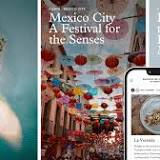The Best Restaurants in Barcelona, Spain

Sun-drenched beaches, architectural marvels, all-night parties, and tapas, tapas, tapas – that’s the seductive fantasy of Barcelona. But for locals, the reality is, as always, more nuanced. The city is bursting at the seams with tourists drawn in by boring paellas and chain restaurants around La Rambla and humdrum tapas in the Gothic Quarter. But the real Barcelona thrives in where to eat: its family-run joints, independent market stalls, and tucked-away bodegas, where local flavors get innovate twists. Food is more than a meal – it’s a celebration of the Catalan identity and the ever-flowing wheels of change, a story told through humble suquet de peix (fish stew) passed down through generations or calçots sold only in season.
For almost a decade, our local bureau chief Paula Mourenza has been uncovering these stories – writing about the real Barcelona, bite by delicious bite. In this guide, we’ve rounded up her essentials on where eat in Barcelona: the places we return to time and again, no matter the hype.
Hermós Bar de Peix: A “Beautiful” Market Stop
Chef and owner Alexis Peñalver is at it again with this latest venture, serving traditional Catalan cuisine with simple products and some complex dishes at Hermós Bar de Peix. Hermós is the ironic nickname of the homely, humble fisherman of the book El Quadern Gris by the famous Catalan journalist and food writer Josep Pla. Hailing from L’Empordà on the northern Catalan coast, the character’s only relief for the pains of life are the suquets de peix – fish stews. Hermós the bar is a tribute to the magnificence of the Catalan fishing tradition, celebrated here with fire, casseroles and bottles of wine in a little bar inside La Llibertat Market, right next to its fishmonger.
Don’t miss the house specialties, the paella of the day, and the suquet de llotja (fish-market stew). The off-menu items always win us over, especially the stew of peas with cod kotkoxas (jowls) and black sausage butifarra – a contrast of green freshness and creamy succulence, the perfect example of a Catalán mar i muntanya (“sea and mountain”) dish. There’s also a cold bar of raw and marinated dishes, everything from fresh oysters to tuna carpaccio with soy and ginger vinaigrette, and a delicious wild sea bass ceviche.
Fonda Pepa: Viva La Kitchen

Back in the day, weary travelers in Spain could make a stop at a village fonda, a type of inn or tavern, for a hearty meal and a place to rest their heads. Today, in Latin America, fonda has a more contemporary meaning: cantina. Both rely on down-home, no-frills fare. But at Fonda Pepa in Gràcia, Catalan Pedro Baño and Mexican Paco Benítez have taken this concept to new gastronomic heights. The restaurant has the easygoing vibe of a village canteen, with the flavors of a royal kitchen. The pair of chefs had spent years working under the glow of Michelin stars, and they’ve brought that shine down to earth in the long, narrow Fonda Pepa, with its old-school marble tables, lovely back patio and open kitchen.
More than the merging of the chefs’ names (Pe and Pa), “Pepa” is a colloquial moniker given to the first Spanish constitution. Like that constitution, Fonda Pepa has a populist touch: its recipes – seasonal, traditional Catalan dishes with Mexican influences – are prepared with premium local ingredients. The cooking is well showcased on a short menu of basics, with notable essentials like the ham and roast beef croquets, cod bunyols (fritters), a rice dish à la presse with prawns, and crispy piglet. Not to be missed are the seasonal off-menu specials, which are some of the fonda’s most interesting. The flagship dish is their rich cap i pota (cow’s head and leg) with octopus, served in a compact and gelatinous terrine with splashes of a delicious aioli and poured over with bouillabaisse. For those in the Gràcia neighborhood, the cry of ¡Viva la Pepa! has taken on new meaning.
Denassus: A God-Blessed Wine Bar

In a narrow space on Blai Street in Barcelona’s Poble Sec neighborhood, we stumbled upon Denassus. Here, the bar occupies nearly half the room, with little tables lining the other side. Upon entry, we are greeted by the jubilant god of wine himself. The giant face of Bacchus, covered in grapes, looks down on us from the wall above. He presides over the scene: a warm, relaxed atmosphere in which to enjoy natural wines and thoughtful dishes.
It’s not easy to find a place that blends quality and fair prices, tradition and modernity, identity and open vision into one easy-going style. Owners Sergi Ruiz and Alejo Mailan have this touch. Here, you can find a range of plates, from traditional tapas to well-crafted, hearty meals, and a wine menu with 150 names. Of these, 70% are dedicated to biodynamic and natural wines, and the house wine is one made by the owners, in collaboration with partner wineries around Catalonia.
Berbena: Back to Basics

Chef Carles Pérez de Rozas believes in the basics, which is why everything at Berbena, down to the beer, coffee, wine and bread, are specially sourced. Even the water is purified using a reverse osmosis system (and offered for free, a rarity in Barcelona). The exceptional dishes are based on the “one-two-three” method of the masters: two ingredients and a third one to prop them up.
For example, the exquisite, thinly sliced cecina (dried and cured beef, one) is paired with fresh celeriac (two), with a final touch of grated lemon and black pepper (three). Another dish we loved for its evocative power is the Amish tomato and cucumber salad with grated botarga (cured fish roe), expressively decorated with nasturtium leaves. Every visit feels like a high-class venture.
Taberna Noroeste: Powerful Tapas

Every bite from chefs Javier San Vicente and David López is an immersive trip across Spain. Playing with a wide variety of ingredients and representing their hometowns of Galicia and Castile and León, the two chefs work together to translate and polish these popular cuisines into a modern language. Taberna Noroeste has a small yet powerful menu of 15 tapas. Some carry the common thread of smoke from their Robata grill, which is fueled with sarmiento (vine branches). This includes their open empanada of calçots (spring onion) and romesco (classic Catalan ingredients), and the hearty mar i muntanya (surf-and-turf) combo of stingray and pig ear in a delicious stew of chickpeas.
We don’t miss an opportunity for seasonal dishes, like one of Maresme peas in spring, delicately served with sea urchin roe (uni) and fennel. The seafood salad is an easy favorite: a small bowl of clams, razor clams, mussels and the venerated percebes (goose barnacles), a distinctive symbol of the Iberian Atlantic coast.
El Racó de l’Agüir: Regional Cuisines Collide

Lined with Valencian tiles and wooden rafters, this family affair in Sant Antoni is cozy and convivial. The open kitchen at the far end churns out Catalan-Valencian recipes that deftly navigate between familiarity and modernity. El Racó de l’Agüir is renowned for their rice dishes (and that means the famous Valencian paella). Depending on the day, you can find fideuàs (noodles with seafood) and rice dishes of all kinds: seafood rice, arròs caldós (brothy/soupy rice), arroz a banda (rice cooked in fish stock) and other seasonal dishes created on the go. We tried their rice with sepionets (baby cuttlefish), tender garlic, and clams, served in an iron paella on the table. The rice texture was perfect and the sepionets tender, while the clams were like small and delicate bites of the sea.
Beyond rice, their salt cod is excellent, served with a romesco sauce and picada (minced almonds). Their monkfish croquettes are also standouts, but even simple comfort food dishes, like their lentil stew, are terrifically restorative. We appreciate how the dishes deftly navigate the territory between familiarity and modernity: healthy, made with top-quality ingredients and impeccably presented.
Agreste: Contemporary Climber

Roser Asensi and chef Fabio Gambirasi opened Agreste up in Barcelona’s hills in 2017, to immediate praise. Years later, we still hear words of admiration flying around the room over the course of our meal. Though there are many appealing options, we settled on seasonal calçots (Catalan spring onion) for what we imagined would be a simple first course. What we got was a splendid reconceptualization of a traditional dish. Instead of fire-grilled, the calçots were cooked at a low temperature, the “grill flavor” evoked through smoked herring eggs. Romesco dipping sauce is subbed with a delicate ajoblanco (“white garlic”) cream, a riff on the popular cold soup of the same name. It was all beautifully topped with alliaria, edible fresh flowers that Roser picks in the forest behind the restaurant. Here was the first of many elegantly executed concepts.
The meat main was truly spectacular, equal parts feral and elegant: beef marrow served inside the bone and covered with raw mince made from an organic T-bone steak. The bone sat on top of a piece of scorched cork and burning rosemary leaves, the heat slowly cooking the meat. For a perfect ending, the pure cocoa and paprika “ice cream” was unexpectedly light and barely sweet. After the meal, we made our way down the hill back to the city, feeling certain that Agreste would soon be on everyone’s list of where to eat in Barcelona.
Cal Siscu: Our Seafood Stop

Despite the big wooden casks on the wall and the creaky shelves crowded with bottles behind the bar, wine is no longer king at Cal Siscu, an old bodega in Hospitalet de Llobregat, a city located on the periphery of the Barcelona metropolitan area. The new ruler, who has deigned to keep these old relics from an earlier era, is seafood – every day the bar’s counter is covered with trays of majestic treasures from the Mediterranean and the Atlantic like prawns, clams, barnacles, and sea snails.
Founded by Francisco “Siscu” Rosés in 1933, Cal Siscu originally sold bulk wine and liquors. At that time, the only seafood served came from a can. It was Siscu’s son who transformed the bodega into a marisquería, offering fresh oysters and what would be their iconic dish, lobster in an aromatic tomato sauce thickened with nuts. Upon retiring in 2011, he handed the reins over to Constantino “Tino” Cabo and head chef Jaume Carbonell, who expanded the menu significantly. Now locals dine on monkfish stew and fritters, fresh local prawns from Palamós, Atlantic barnacles, Galician clams, grilled espardeñas (sea cucumbers), among others. But the lobster in tomato sauce still remains the star, with Tino sidling up to your table so you can take your pick of live lobster.
Mamá Heladera: Sweet Dreams

While not a restaurant, why not end our list on where to eat how we would any meal – with one of our favorite ice cream spots in Barcelona. At Mamá Heladera in Poblenou, you’ll find more than chocolate and vanilla. The smell of clean clothes with a lavender sachet from grandma’s closet; the family farm in nearby Lleida province with apple trees and wild aromatic herbs growing all around in summer; peaches washed in seawater on a day at the beach; an afternoon snack of popsicles while playing under the pine tree in the garden. These are just some of the memories that neighbors left in the mailbox of Mamá Heladera, where owner Irene Iborra turns them into gelato flavors.
Salted peach, redcurrant with pine honey, lavender with a touch of cherry, Irene’s flavors are inspired and evocative. Mamá Heladera sits next to Tío Che, a classic horchatería and ice-cream parlor on Rambla del Poblenou that opened in 1912. Irene is part of the fifth generation of Tío Che, and though she had plans to travel and take a different career path, she remained fascinated with the world of ice cream. “I fell in love with what the ice cream generates in people – the search for a perfect moment,” she says.
Published on February 07, 2025


 United Kingdom
United Kingdom Argentina
Argentina  Australia
Australia  Austria
Austria  Brazil
Brazil  Canada
Canada  Germany
Germany  Ireland
Ireland  Italy
Italy  Malaysia
Malaysia  Mexico
Mexico  New Zealand
New Zealand  Poland
Poland  South Africa
South Africa  United States
United States 
























